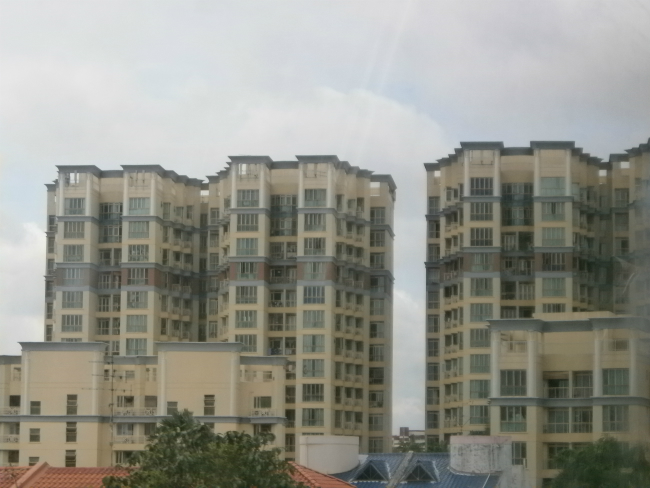by SRX
Elections Can Mark a Return to Normalcy in Singapore’s Property Markets
On the morning of Singapore’s elections, the property market is stable. In our opinion, a combination of steps by the government and the real estate industry over the last few years have made it safe to remove the Additional Buyer Stamp Duty (ABSD) and make Singapore the envy of global property markets.
As nearby articles HDB Market Stablizes in August, No Doubt, the Bubble has Burst, and Singapore Rentals Continue to Slide demonstrate with the latest market data, prices in all of Singapore’s property markets are subdued and there is no longer a threat of a housing bubble.
Furthermore, we have, and continue to submit, that overall price indices have not kept pace with growth in Gross Domestic Product (GDP) and Median Household Income. (See GDP and Household Income Increase while Property Prices Drop.) As such, housing is very much affordable vis-à-vis key macroeconomic indicators thanks to efforts by HDB, including the construction of more Built-to-Order and other initiatives designed to improve affordability.
Since prices are under control and home ownership is accessible to all generations of Singaporeans, it is an opportune time to remove ABSD for the good of the overall economy.
As China struggles and Europe stagnates, capital is in search of a safe haven for investment. The United States is clearly a destination but Singapore can once again be. Imagine a robust Singapore economy driven, in part, by a robust and transparent international property market.
It’s possible to achieve this vision without risking a return to the rapid price expansion of 2010-2012. In fact, the Singapore market has learned much since the financial crisis of 2008. We have three tools at our disposal that make it safe to remove ABSD:
- Standardized underwriting constraints;
- Flexible speculation controls;
- Transparent pricing.
- Standardized Underwriting Constraints
In his book, Hidden in Plain Sight, Peter Wallison, a member of the Financial Crisis Inquiry Commission authorized by the United States Congress, 2009-2011, writes:
“It is clear beyond doubt that good underwriting standards produce a stable housing market during normal (non-stressed) times, while deviations from these standards produce instability and high rates of mortgage default. A decision to loosen underwriting standards as a matter of deliberate (U.S.) government policy was a serious error.”
A stable housing market underpins a strong financial system and vice versa. As such, in late 2012, the Monetary Authority of Singapore (MAS) conducted a thematic inspection of the residential property loans business of the major banks in Singapore. MAS determined that there were “areas for improvement, particularly in banks’ underwriting practices.”
Following its thematic inspection, MAS took several steps in 2013 to standardize the mortgage underwriting process.
These steps included:
- Tightening loan-to-value (“LTV”) limits for different loan scenarios;
- Reducing maximum loan tenures;
- Reducing the mortgage servicing ratio (“MSR”) for HDB loans to 30%;
- Imposing a total debt servicing ratio (“TDSR”) of 60%.
SRX Property’s analysis on the effectiveness of Cooling Measures indicate it was a combination of increased housing supply and the standardization of underwriting that stabilized the market.
When ABSD was implemented, the market was not operating under standardized underwriting. This should give us confidence that we can lift ABSD and still protect Singaporeans from overextending themselves in a low interest rate environment.
Flexible Speculation Controls
No economy wants hot money, but every economy needs capital to spur business and asset growth.
For most people, their homes represent the bulk of their retirement savings. For many, property offers people the opportunity for upward mobility as they use financing to buy and sell their way into incrementally more expensive homes.
As Mr. Lee Kuan Yew famously said, “Home ownership motivates Singaporeans to work hard and upgrade to better flats for a better quality of living.”
It is clearly in the best interest of Singaporean homeowners for their homes to appreciate at a steady rate overtime. Stagnation and volatility in the housing market are equally undesirable, both for Singaporeans and overseas investors.
Since good overseas capital spurs the economy and price appreciation in the housing market, the trick, then, is not to prevent capital from coming into Singapore, which is precisely what ABSD does. The trick is to keep good capital from leaving.
The Seller’s Stamp Duty (SSD) is an example of a safeguard that prevents speculation without deterring good capital inflows into Singapore.
Investors are more than used to lock-in periods, especially those who are investing in private companies. As a result, rules designed to prevent speculation help the property market by attracting long-term investors who are committed to the long-term sustainability of their homes.
SSD is another reason we should feel confident that we can remove ABSD and still maintain long-term, sustainable property markets in Singapore.
Transparent Pricing
The third safeguard is that Singapore has much more transparency in pricing than it did during the price build-up in 2010-2012.
Since 2012, the Government has made property data more accessible to the industry and the general public.
Meanwhile, the estate agencies and StreetSine Technology Group, a subsidiary of Singapore Press Holdings (SPH), formed the Singapore Real Estate Exchange (SRX) to improve pricing transparency, productivity, and market efficiencies.
Now, all market participants, including consumers, agents, bankers, underwriters, policy analysts, and decision-makers have access to pricing tools like X-ValueTM and Home ReportTM. No longer are people making decisions in the dark.
More transparency makes speculation and housing bubbles more difficult to form. The distribution of X-Value to all market participants strengthen pricing, valuations and underwriting and, thus, reduces systemic risk to the financial system.
Furthermore, granular data and analytic tools now available to policy analysts allow them to understand each type of property and market (i.e., HDB, cluster houses, etc.) in ways that were not possible before 2010-2012. This, in turn, means policymakers can devise customized policy solutions for each market instead of applying a blunt instrument to all of them. This ability to target specific sub-markets can protect one market from negatively impacting another one.
These tools were unavailable when ABSD was installed. If ABSD were removed today, these tools are in place to help prevent the future market from getting out of control.
_____________________________
Much has changed since the rapid price expansion in 2010-2012. Some of the Cooling Measures have been good for the stability of the market while others are hurting household wealth and the economy.
We would suggest that, as a market, we have learned much about what works and what does not over the last year or two. At the same time, the market has improved in its governance, productivity, efficiency, and transparency.
As long as the Government and industry continues to practice sound mortgage underwriting, guard against speculation, and strive for more transparency in pricing, it is our judgment that it is possible to remove ABSD without destabilizing Singapore’s property markets.
Both the Government and the private sector have worked hard to stabilize the property market.
Isn’t it time to start getting a return on all this hard work and reopen Singapore as a much stronger, more stable, and more prosperous property market?







